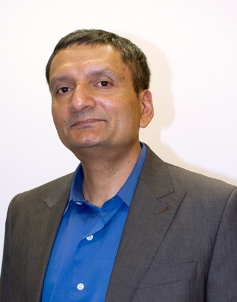|
Bengal Energy Ltd. (BNG-TSX) |
||
|
March 9, 2012 Issue |
||
|
The Most Powerful Name In Corporate News and Information |
||
CURRENT ISSUE | COVER ARCHIVES | INDEX | CONTACT | FINANCIALS | SERVICES | HOME PAGE |
||
|
With Quality Exploration Acreages in India and Australia, Plans to Drill 7 Wells in 2012 as well as More Light Oil Development and High Impact Multi-Play Exploration Wells, with the Cash To Do It, Bengal Energy Ltd. is Well Positioned for Future Growth |
||
|
Bengal Energy is an international oil and gas exploration and production company based in Calgary, Alberta. The Company has an active inventory of highly prospective international opportunities in India and Australia, providing a significant footprint in the international junior oil and gas business. Bengal is committed to growing shareholder value through exploration and development activities, and strategic joint ventures and acquisitions. |
|
|
|
Interview conducted by: Lynn Fosse, Senior Editor, CEOCFO Magazine, Published – March 9, 2012
Dr. Chakrabarty: Bengal is special for three reasons. One is where we are, second is the collective expedience of the board and the team, and third is our strategy of bridging Canadian expedience with our core area requirements. We find Australia and India to be particularly safe jurisdictions from a fiscal stability and ease of operations standpoint. The oil price benchmarks there, in fact, are better than that for typical domestic-focused Canadian companies. The second is a very diverse and strong team, both the management team as well as the board. The third is that the team has grown up in the oil and gas industry in western Canada. Therefore, some of the things that we have been looking at and solving some ten to fifteen, maybe even more years ago are the type of problems that operators in India and Australia seem to be grappling with in the areas where we are operating. We believe that this is a particularly interesting thing for us to leverage off of.
Dr. Chakrabarty: I believe the second oldest oil well in the world was drilled in India in the state called Assam in northeast India in late 1800s, where in 1901 in a small town called Digboi an oil refinery was established. This refinery is still in operation, and also happens to be the world's oldest operating refinery. After India’s independence in 1947, the growth of the industry has taken a bunch of different routes. In the early days, the industry grew through collaboration with Russian companies, which resulted in the discovery in 1974 of India’s largest producing oil field, Bombay High (or Mumbai High). Then fast forwarding to where the situation is today, we find that the oil and gas industry has historically been dominated by several nationalized oil companies, which creates opportunities, such as bypassed pays, new exploration play types and complex exploitation opportunities. In more recent years, there have been North American and international exploration companies that have enjoyed huge success in India, stepping into areas where nobody has stepped in before or looking at things very differently. Canada's Niko Resources is a notable example of that. There are other international companies, such as Cairn India, who have been very successful in India by looking at geology differently and by persevering. Therefore, we believe if you are a junior company with the right sort of focus, staying power and attitude, then you can be successful in India.
CEOCFO: Does Bengal Energy have a preference for oil or gas or is it strictly opportunistic? Dr. Chakrabarty: It is strictly opportunistic, but again there is a long answer to that. In India and Australia, the gas situations are actually fascinating. Natural gas prices in India are healthy compared to what we have today in North America. India has a huge demand for primary energy sources; if you find it, you can sell it. Gas prices are $5 and higher. There are some places where CNG (Compressed Natural Gas) attract double digits in the US$ per thousand cubic feet; so very good prices. In India in our offshore block, the focus for us is natural gas. We are quite positive and optimistic about that, because there is a huge market for it. Our partner in our onshore block is a company called GAIL (Gas Authority India Ltd.), and they are India’s largest gas midstream company. It is a government owned company. They control something like 60% to 70% of the gas infrastructure in India, so a natural choice given our strategy in India. In Australia, in the Cooper Basin for example, which is land locked, there is a very thriving natural gas acquisition market. You find the gas, and there are big boys who want to buy you out or buy out your discovered gas asset. That is because in Australia, in the west coast, gas prices are about $8 per thousand cubic feet. You go to the east coast; it is about $3.5 per thousand cubic feet. The west coast prices have responded to offshore Western Australian LNG prices. On the east coast, there are three separate LNG projects slated to be under construction. These three projects have a stated capacity north of 25 million tons per year of LNG, which translates to gas input of about 1.2 or 1.3 TCF per year, which is about half of the entire natural gas export that we make from Canada to US, just from Australia's east coast alone. So, that is definitely going to drive prices up. Today, the gas production in eastern Australia is a small fraction of the capacity I just talked about. Therefore, today if you discover gas, the most recent price benchmark is about $2.25 per 2P (Proved and Probable) reserves in MCF is the price. If you sell the gas it is $3.50; and this ratio is very high, which to us essentially speaks to the belief that the forward price strip is going to trend up. That is our thinking and if there are gas assets, our thinking today is that we will not produce it, but we will book resource or reserves as the case may be depending upon what our independent evaluation will prescribe. Once a sufficient quantity has been booked, then we will be looking to transact on that particular asset alone. For oil, we will look to produce it, and that's how our operational strategy has been designed.
CEOCFO: Would you provide some detail about what is happening today on the ground for Bengal Energy?
Dr. Chakrabarty:
In India, we have two blocks on shore and off shore in the Cauvery Basin in
SE India. In the onshore block we have a 30% interest. We are shooting a
very large 3D seismic program, which is going to take a large part of this
calendar year after accounting for a window of no seismic shoot given the
monsoon in-between. So, straddling the monsoon, we are estimating it will
probably take the whole year. Once that is done, there will be time for
processing and interpretation of data and in the fall and thereafter, in
later 2013, the plan is to drill three exploration wells. On the offshore
block where we are very excited by what we see as a viable exploration play,
we have 100% interest. We see extremely robust fiscal terms as in our net
take is very high. We will at some point be looking for partners, because
this is offshore and we are a small company. Our initial plan is to do the
seismic and then ideally bring in partners thereafter. Right now we are
reprocessing some existing seismic data and we will be looking to shoot
later this year on that offshore block.
CEOCFO: What is the financial picture for Bengal Energy today? Dr. Chakrabarty: We have about $29 million in cash, no debt, and some production. In addition, some production is behind pipe, and some development wells are being drilled. Therefore, our program for this year could be as large as a $20 million capital program. Yes, we have a lot going on, but if you look at the plan this year, it is a mixed bag of development/appraisal and exploration step-out wells over a development area; so they are low risk and expected to generate a healthy cash flow for us. Then the exploration wells that we are drilling are onshore, within our bite size, and target large prizes. Although we are currently 100% interest owners in the Tookoonooka block, there are some companies that are interested in taking a piece and we are always looking to manage our capital program, and if the right kind of partner shows up with a great farm-in offer, then definitely we will be looking at it favorably.
CEOCFO: Is Bengal Energy looking at any additional properties? Dr. Chakrabarty: We always have to look at what is going on around our core areas. Sometimes we look at it just to access data and to get an idea as to what is going on in permits and plays of interest to us. In addition, having a larger production base is always a good idea, so from that point of view, while we are certainly not going after opportunities, some are coming to us and if they look interesting, we will look at them.
CEOCFO: Has the investment community paid attention? Dr. Chakrabarty: No, the investment community has historically not paid a great deal of attention to smaller international exploration companies, and we understand that. We have a number of supporters and we hang on to their support. We are always looking for new friends and long-term investors, but at the end of the day, if we drill a couple of good wells, if we show an area where we can demonstrate sustainable success, I think we will get our due attention.
CEOCFO: Final thoughts, why should potential investors pay attention to Bengal Energy today?
Dr. Chakrabarty:
Bengal Energy has a very good technical, innovative and entrepreneurial
team. We have a lot of experience overseen by a very strong board, some of
whom have built and sold companies with great results for shareholders; as
well, the board has a broad set of knowledge of many international
jurisdictions, capital markets, and service sector knowledge. We work very
closely with our board. With this team, we have demonstrated production
success in the 52 API light oil Cuisinier discovery in Australia. We have
one of the best platforms among our peers in terms of the quality of
exploration acreages. In 2012, the plan is to drill seven, and perhaps more
light oil development and high impact multi-zone exploration wells, with the
exploration wells having the capability of being game changers for this
company. And we have the cash to do it. So this is our year, and the timing
for potential investors is very good. |
||
|
We have one of the best platforms among our peers in terms of the quality of exploration acreages. In 2012, the plan is to drill seven, and perhaps more light oil development and high impact multi-play exploration wells, with the exploration wells having the capability of being game changers for this company. And we have the cash to do it. So this is our year, and the timing for potential investors is very good. - Chayan Chakrabarty, Ph.D. (Petroleum Engineering), MBA |
||
|
|
||
|
|
||

